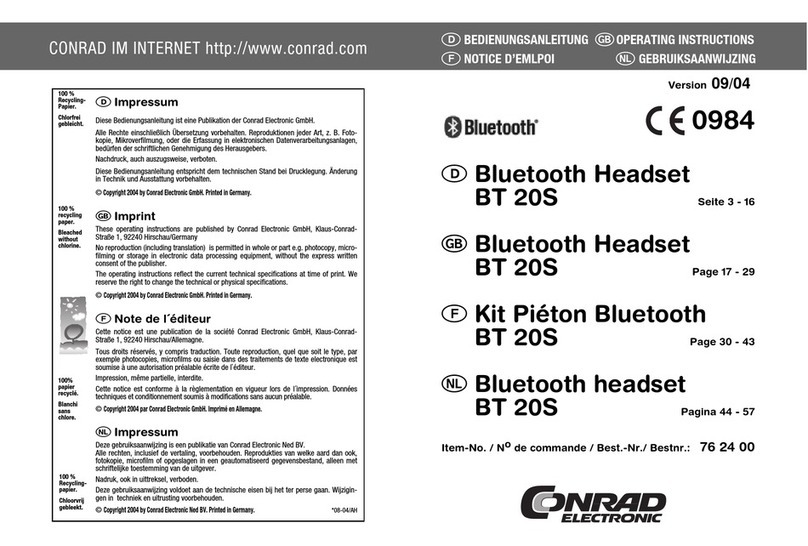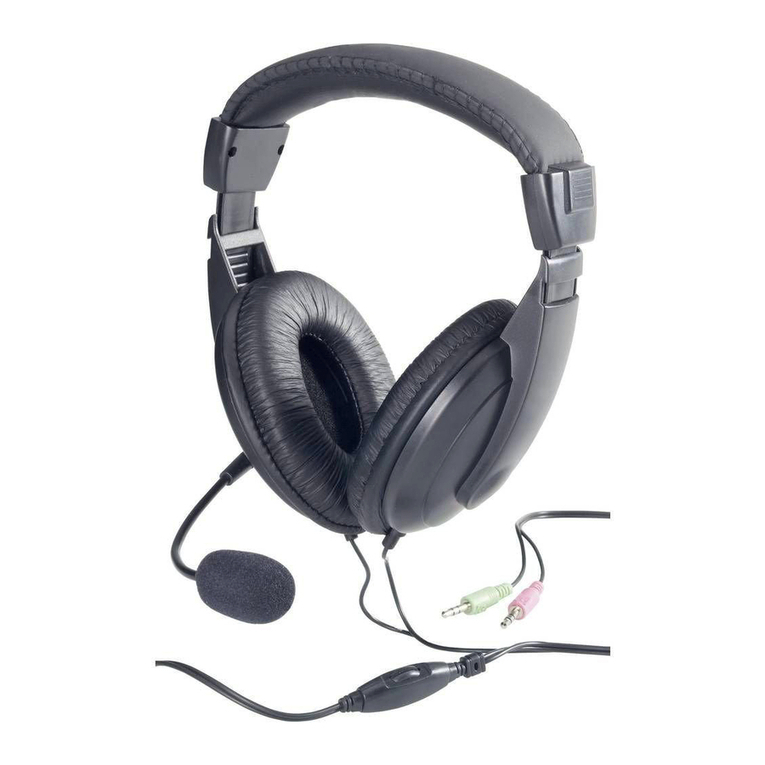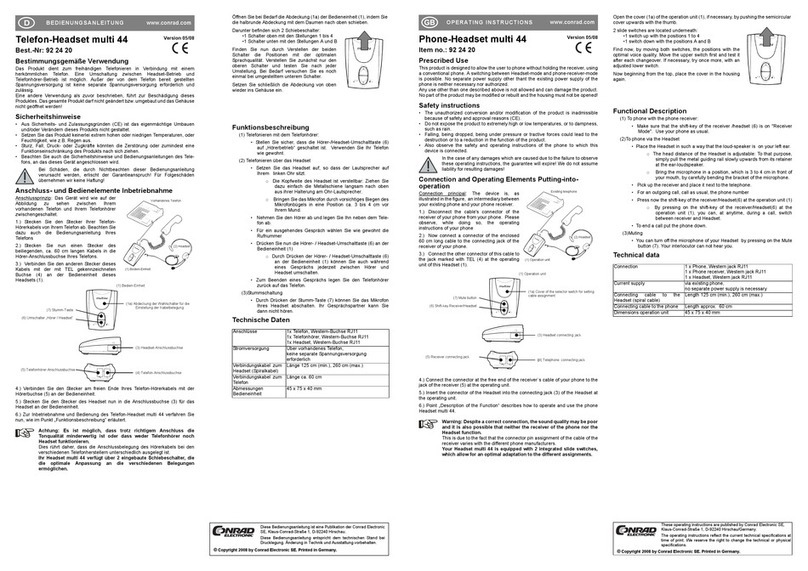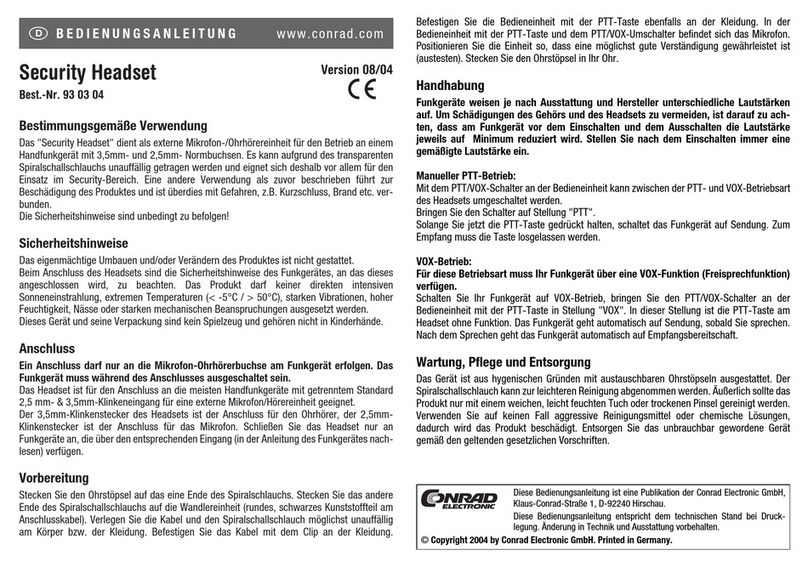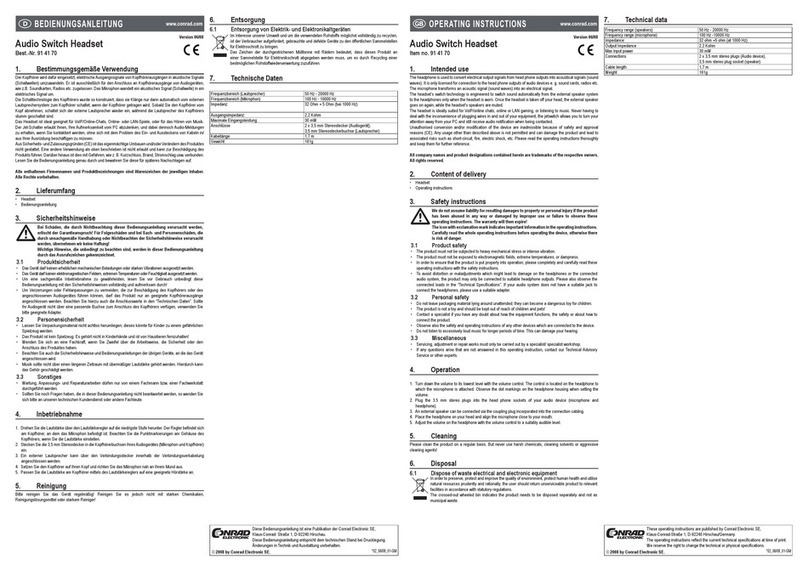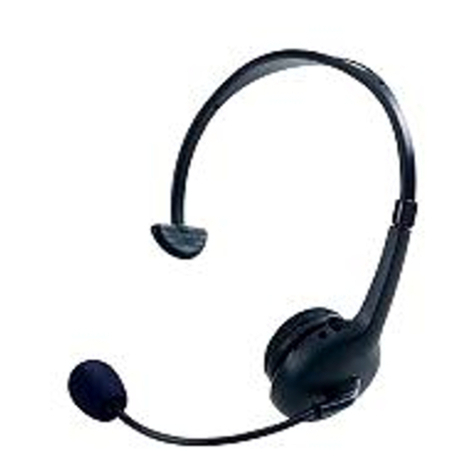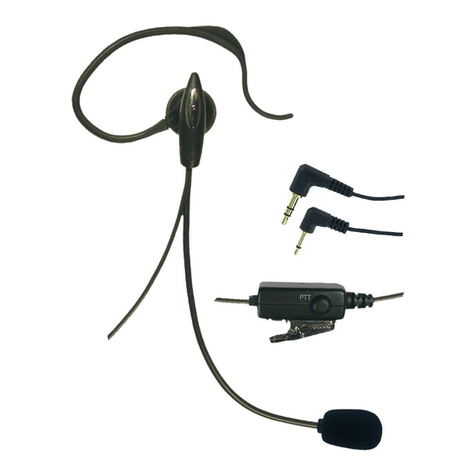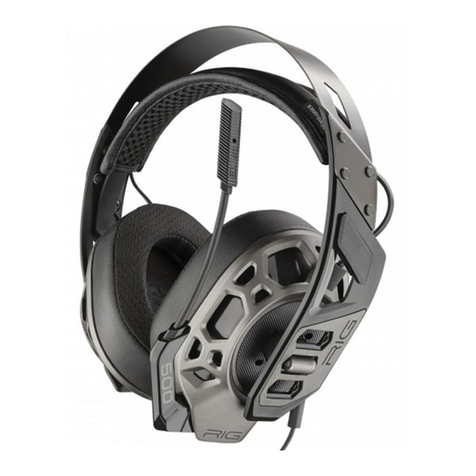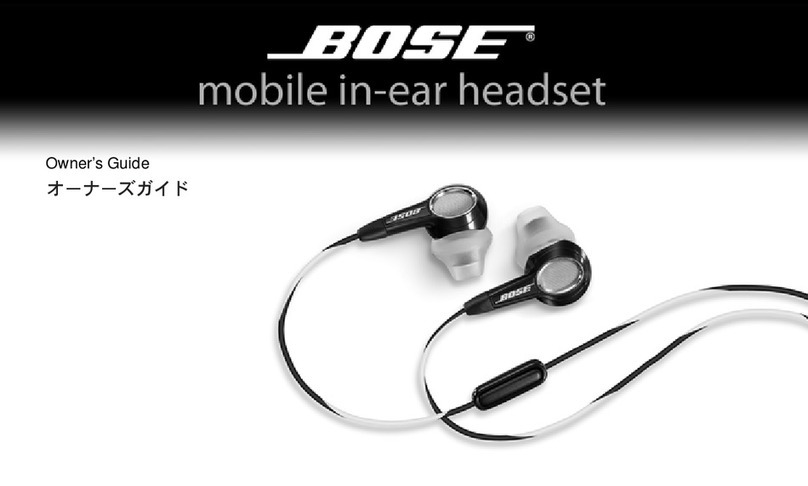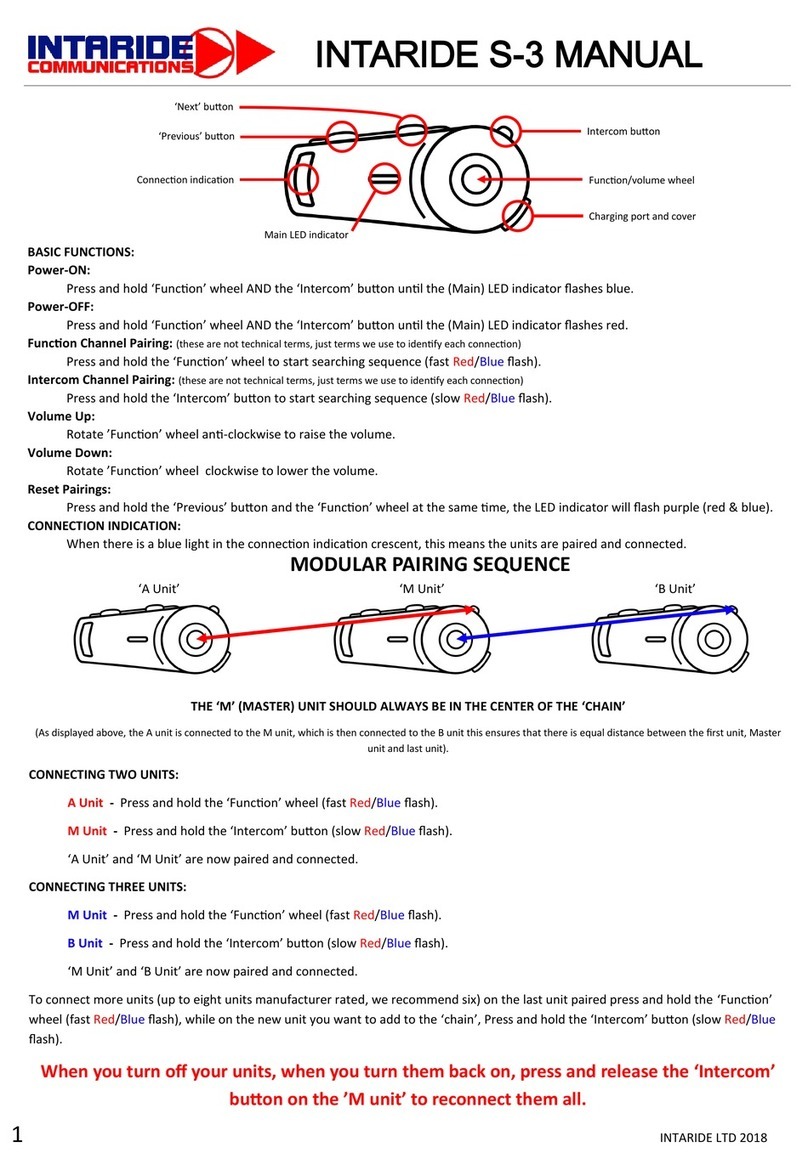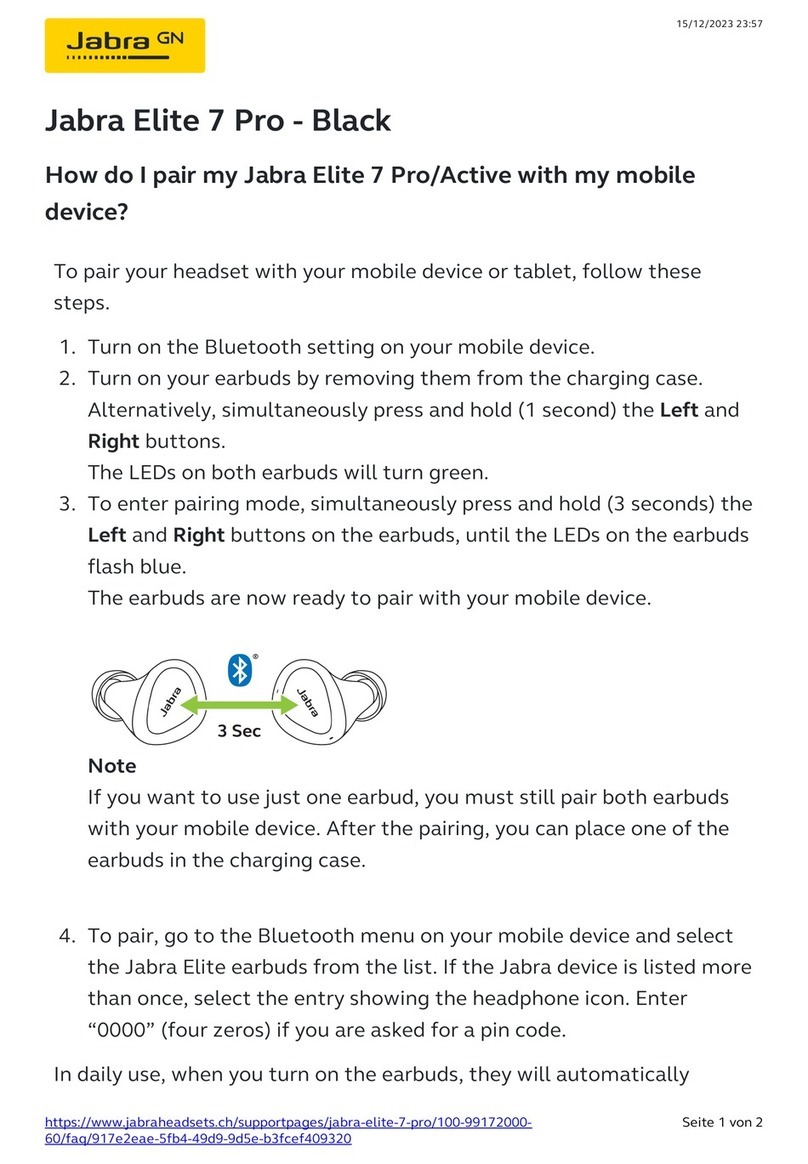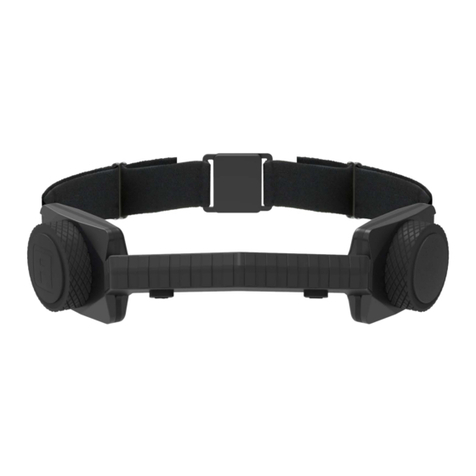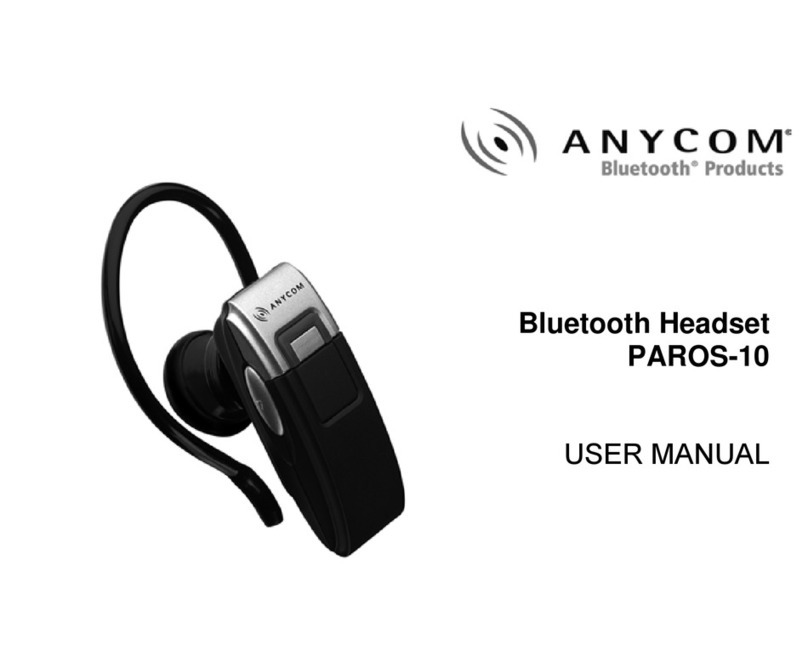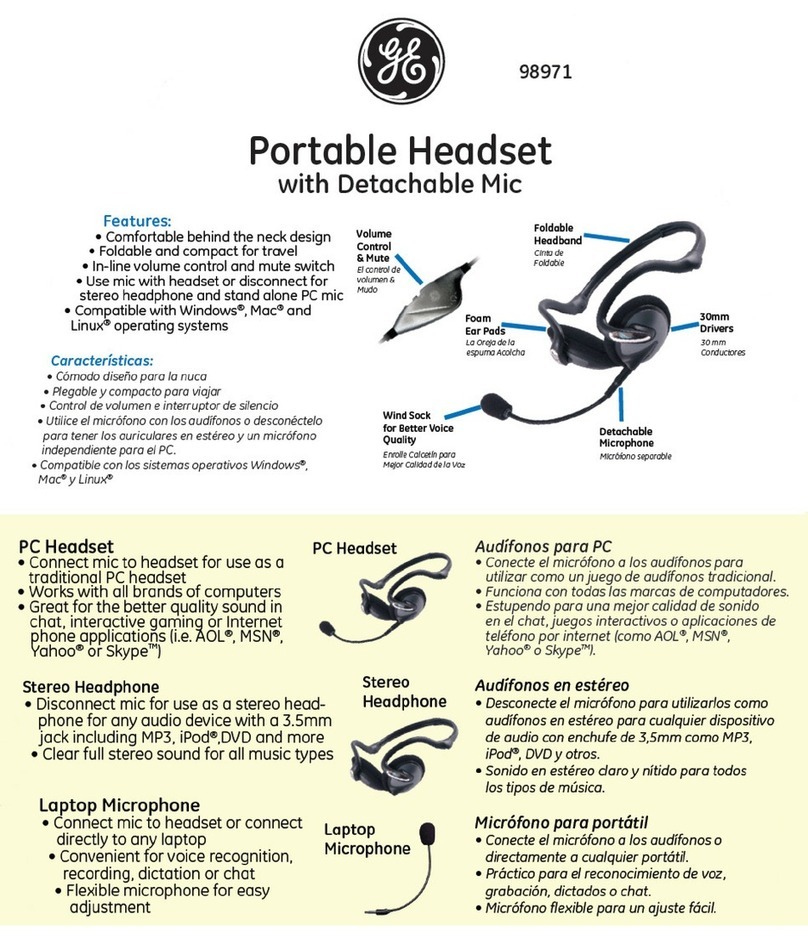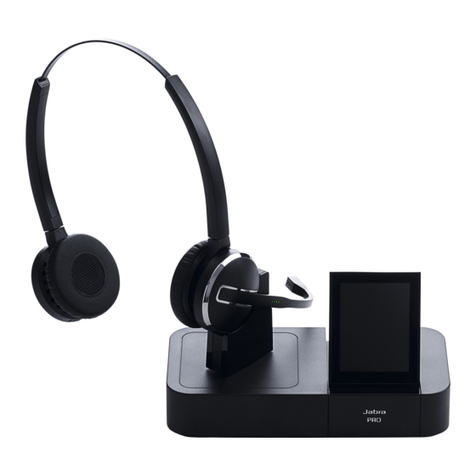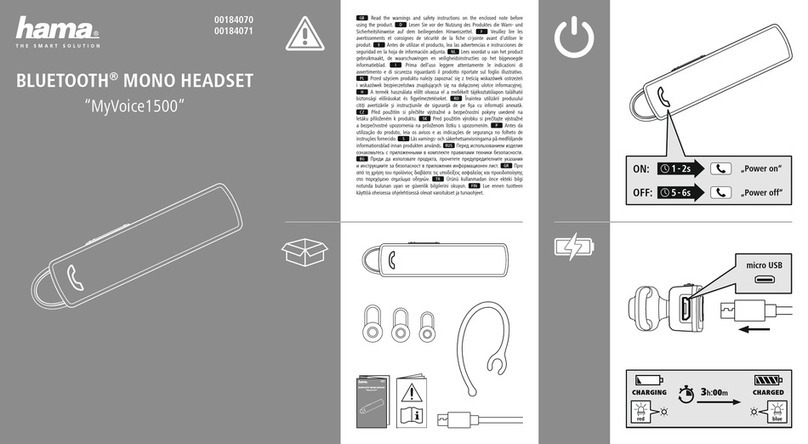
Ce mode d‘emploi est une publication de la société Conrad Electronic SE, Klaus-Conrad-Str. 1,
D-92240 Hirschau (www.conrad.com).
Tous droits réservés, y compris de traduction. Toute reproduction, quelle qu‘elle soit (p. ex. photo-
copie, microfilm, saisie dans des installations de traitement de données) nécessite une autorisation
écrite de l‘éditeur. Il est interdit de le réimprimer, même par extraits.
Ce mode d‘emploi correspond au niveau technique du moment de la mise sous presse. Sous réserve
de modifications techniques et de l‘équipement.
© Copyright 2013 by Conrad Electronic SE.
Utilisation conforme
Le produit est conçu pour être branché à un ordinateur et il sert alors de casque audio.
Il faut impérativement respecter les consignes de sécurité et les autres informations de ce
manuel d’utilisation.
Ce produit est conforme aux exigences des directives européennes et nationales en vigueur.
Tous les noms d’entreprise et les appellations d’appareil figurant dans ce manuel d’utilisation
sont des marques déposées de leurs propriétaires respectifs. Tous droits réservés.
Contenu de la livraison
• Micro-casque
• Manuel d’utilisation
Consignes de sécurité
Tout dommage résultant d’un non-respect du présent manuel d’utilisation en-
traîne l’annulation de la garantie ! Nous déclinons toute responsabilité pour
les dommages consécutifs !
Nous déclinons toute responsabilité pour d’éventuels dommages matériels
ou corporels dus à un maniement incorrect ou au non-respect des consignes
de sécurité. Dans de tels cas, la garantie prend fin.
• Pour des raisons de sécurité, il est interdit de transformer ou de modifier le produit
arbitrairement. Ne le démontez jamais.
• Ce produit n’est pas un jouet ; gardez-le hors de la portée des enfants.
• Veillez à ce que l’ensemble du produit ne soit pas mouillé ni humide.
• Ne laissez pas traîner le matériel d’emballage. Cela pourrait constituer un jouet
dangereux pour les enfants.
• Un volume trop élevé peut causer des troubles auditifs. Réglez donc toujours le
volume à une intensité agréable pour vos oreilles !
• Cet appareil doit être manipulé avec précaution ; les coups, les chocs ou une
chute, même de faible hauteur, peuvent l’endommager.
Mise en service
Branchez la fiche USB du micro-casque à un port USB libre de votre ordinateur (ou à un
concentrateur USB autonome doté de son propre bloc d’alimentation).
Le système d’exploitation reconnaît le nouveau matériel et installe les pilotes requis (contenus
dans le système d’exploitation - Windows XP exigé au minimum).
Le micro-casque fonctionne théoriquement comme une nouvelle carte son (ex-
terne). Windows active généralement l’entrée/la sortie audio appropriée au moment
de la connexion du micro-casque.
Dans le Panneau de configuration de Windows, vous pouvez commuter, si néces-
saire, entre le micro-casque et une carte son déjà disponible dans les paramètres
audio.
Utilisation
• Placez le micro-casque de telle sorte que le microphone soit positionné à gauche ; tenez
éventuellement compte des inscriptions « R » (droite) et « L » (gauche) sur le micro-casque.
• Grâce au serre-tête réglable, vous pouvez réglez la position des écouteurs du micro-casque
à la taille de la tête.
• Réglez le volume audio souhaité à l’aide du bouton ovale sur le panneau de commande :
« VOLUME • » = volume plus faible
« VOLUME
•
» = volume plus élevé
Un volume trop élevé peut causer des troubles auditifs. Réglez donc toujours le
volume à une intensité agréable pour vos oreilles !
• Positionnez le microphone flexible de sorte qu’il soit près de votre bouche. Le microphone
peut être tourné vers le haut lorsque vous ne l’utilisez pas.
• Si le microphone doit être coupé, appuyez sur le bouton « MIC MUTE » qui se trouve sur le
panneau de commande. Le voyants LED adjacents vous indiquent les fonctions correspon-
dantes :
LED éteinte = coupure du microphone activée
LED allumée= coupure du microphone désactivée
Dépannage
Aucun son diffusé par les écouteurs
• Réglez correctement le volume audio sur le panneau de commande du micro-casque.
• Sélectionnez la bonne carte son (entrée audio) sur l’ordinateur. Sous Windows, cela s’effec-
tue dans le Panneau de configuration par exemple.
Normalement, le casque est automatiquement activé lorsque vous vous connectez à votre
ordinateur.
• Vérifiez le réglage du volume de diffusion audio dans le système d’exploitation (sous Win-
dows, soit dans le panneau de configuration ou, le cas échéant, via l’icône du haut-parleur
dans la barre des menus).
Enregistrement impossible via le microphone
• Sélectionnez la bonne carte son (sortie audio) sur l’ordinateur. Sous Windows, cela s’effec-
tue dans le Panneau de configuration par exemple.
Normalement, le casque est automatiquement activé lorsque vous vous connectez à votre
ordinateur.
• Vérifiez le réglage du volume d’enregistrement audio dans le système d’exploitation (sous
Windows, soit dans le panneau de configuration ou, le cas échéant, via l’icône du haut-
parleur dans la barre des menus).
• Assurez-vous que l’entrée du microphone dans le système d’exploitation est activée ou
qu’elle n’est pas coupée.
• Appuyez sur le bouton « MIC MUTE » sur le panneau de commande du micro-casque. Si le
voyant LED s’allume, le microphone est alors activé et prêt à l’emploi. Si le voyant LED ne
s’allume pas, la coupure du microphone est activée.
Informations stéréo inversées gauche/droite
• Vérifiez si le casque d’écoute est bien placé.
Placez le micro-casque de telle sorte que le microphone soit positionné à gauche ; tenez
éventuellement compte des inscriptions « R » (droite) et « L » (gauche) sur le micro-casque.
Entretien et nettoyage
Débranchez d’abord le micro-casque de l’alimentation électrique (détranchez la fiche USB).
L’entretien ou les réparations ne doivent être effectués que par un spécialiste ou un atelier
spécialisé. N’ouvrez ni ne démontez jamais l’appareil ; il ne contient aucun composant qui
exige une maintenance.
Pour le nettoyage, utilisez un chiffon doux, sec et propre. N’appuyez pas trop fort sur la surface
du boîtier pour éviter de le rayer.
Vous pouvez facilement enlever les poussières à l’aide d’un pinceau à long poils doux et
propres et d’un aspirateur.
N’utilisez en aucun cas de nettoyants agressifs, d’alcool de nettoyage ou de so-
lutions chimiques car ces produits pourraient attaquer le boîtier ou nuire au bon
fonctionnement de l’appareil.
Élimination
Les appareils électriques et électroniques ne doivent pas être jetés dans les pou-
belles ordinaires.
Procédez à l’élimination du produit au terme de sa durée de vie conformément aux
dispositions légales en vigueur.
Caractéristiques techniques
Raccordement...................... USB
Puissance absorbée.............max. 500 mA
Réponse en fréquence......... écouteurs : 20 - 20000 Hz
.............................................. Microphone : 100 - 10000 Hz
Longueur de câble................env. 2 m
Poids.....................................env. 205 g
MODE D’EMPLOI www.conrad.com
Micro-casque de jeu « G-Star HS-317UV »
N° de commande 39 44 62
Version 04/13

